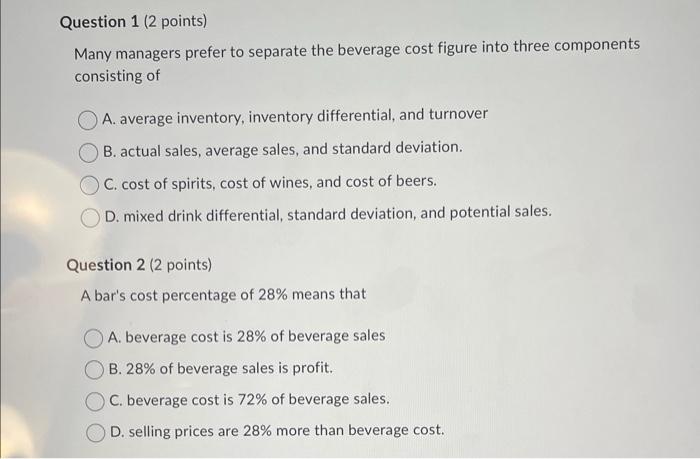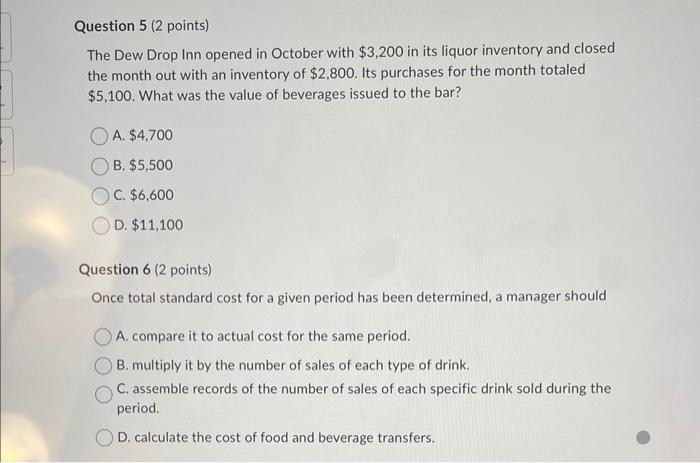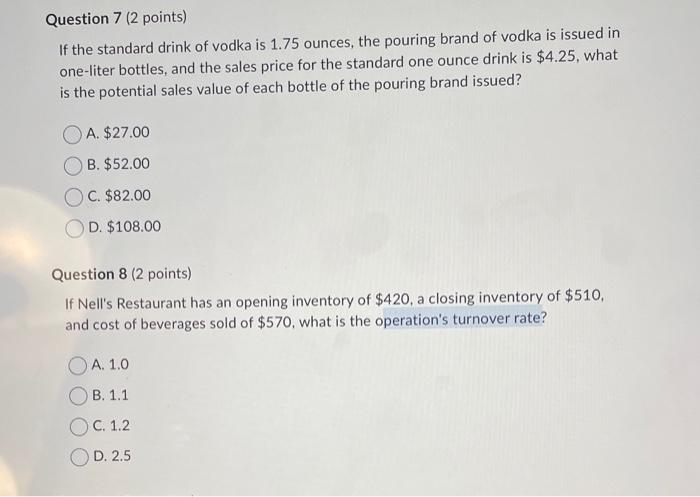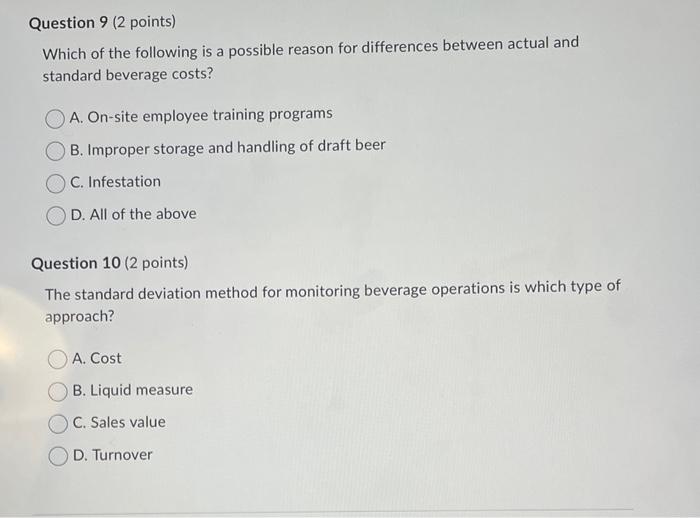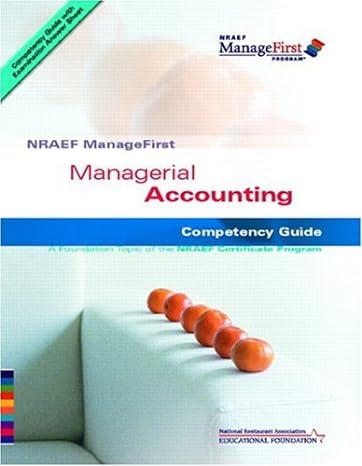Many managers prefer to separate the beverage cost figure into three components consisting of A. average inventory, inventory differential, and turnover B. actual sales, average sales, and standard deviation. C. cost of spirits, cost of wines, and cost of beers. D. mixed drink differential, standard deviation, and potential sales. Question 2 ( 2 points) A bar's cost percentage of 28% means that A. beverage cost is 28% of beverage sales B. 28% of beverage sales is profit. C. beverage cost is 72% of beverage sales. D. selling prices are 28% more than beverage cost. Managers can maintain computer-based perpetual inventories of beverages by means of a A. database program. B. word processing application. C. modem. D. design program. Question 4 (2 points) Saved The bar inventory differential iscalculated by A. adding the bar inventory value at the beginning of the month to the value at the end of the month. B. subtracting the bar inventory value at the beginning of the month from the value at the end of the month. C. subtracting the bar inventory value at the end of the month from the value at the beginning of the month. D. dividing beverage cost by beverage sales. The Dew Drop Inn opened in October with $3,200 in its liquor inventory and closed the month out with an inventory of $2,800. Its purchases for the month totaled $5,100. What was the value of beverages issued to the bar? A. $4,700 B. $5,500 C. $6,600 D. $11,100 Question 6 (2 points) Once total standard cost for a given period has been determined, a manager should A. compare it to actual cost for the same period. B. multiply it by the number of sales of each type of drink. C. assemble records of the number of sales of each specific drink sold during the period. D. calculate the cost of food and beverage transfers. If the standard drink of vodka is 1.75 ounces, the pouring brand of vodka is issued in one-liter bottles, and the sales price for the standard one ounce drink is $4.25, what is the potential sales value of each bottle of the pouring brand issued? A. $27.00 B. $52.00 C. $82.00 D. $108.00 Question 8 (2 points) If Nell's Restaurant has an opening inventory of $420, a closing inventory of $510, and cost of beverages sold of $570, what is the operation's turnover rate? A. 1.0 B. 1.1 C. 1.2 D. 2.5 Which of the following is a possible reason for differences between actual and standard beverage costs? A. On-site employee training programs B. Improper storage and handling of draft beer C. Infestation D. All of the above Question 10 (2 points) The standard deviation method for monitoring beverage operations is which type of approach? A. Cost B. Liquid measure C. Sales value D. Turnover
